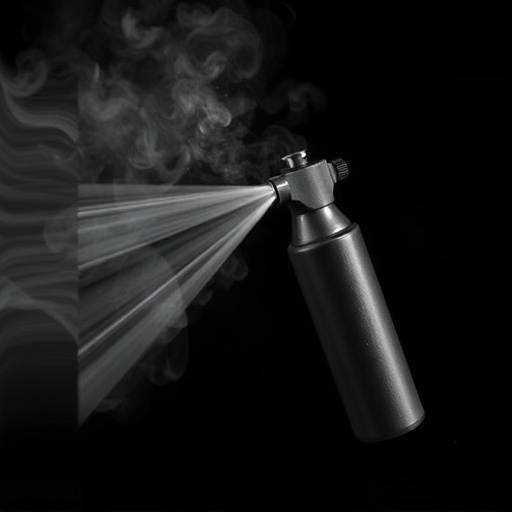Pepper spray, a powerful tool for riot control, temporarily incapacitates individuals by irritating vital systems. Effective Pepper Spray Defense Training Tips are crucial for law enforcement and personal safety in high-risk situations. This training covers spray types, deployment techniques, wind patterns, aim, practice drills, legal guidelines, equipment maintenance, protective gear, and de-escalation tactics, ensuring officers manage disturbances effectively while minimizing harm.
Riot control agents, a powerful tool in law enforcement’s arsenal, play a pivotal role in managing public disturbances. This article explores the world of these agents, with a focus on pepper spray—a ubiquitous choice for officers on the front line. We delve into the types and effects of riot control substances, providing essential defense training tips to ensure their safe and effective use. Additionally, we examine legal considerations and safety protocols, offering comprehensive insights for law enforcement professionals.
- Understanding Riot Control Agents: Types and Effects
- Pepper Spray: A Common Tool for Law Enforcement
- Defense Training Techniques for Effective Use
- Legal Considerations and Safety Protocols
Understanding Riot Control Agents: Types and Effects
Riot control agents, often referred to as chemical agents or tear gas, are a crucial component in law enforcement strategies for managing large-scale public disturbances and civil unrest. These substances are designed to disrupt and disperse crowds by causing temporary discomfort, impairing vision, and suppressing aggression. Understanding the types and effects of these agents is essential for both law enforcement officers and individuals seeking Pepper Spray Defense Training Tips.
There are various types of riot control agents, each with distinct properties and levels of potency. Common ones include oleoresin capsicum (OC) spray, commonly known as pepper spray, which irritates the eyes and respiratory system; and chloroacetic acid-based agents that cause a burning sensation and teary eyes. The effects can range from temporary blindness and coughing to more severe symptoms like difficulty breathing and even chemical burns in extreme cases. Proper training is vital to ensure the safe and effective use of these agents, especially in high-pressure situations where quick thinking and accurate application are critical.
Pepper Spray: A Common Tool for Law Enforcement
Pepper spray, a common tool in law enforcement, is a powerful riot control agent designed to temporarily incapacitate individuals and disrupt violent situations. It works by irritating the eyes, nose, and respiratory system, leading to coughing, tears, and difficulty breathing. This non-lethal weapon is often used as a last resort when other de-escalation tactics fail.
Effective pepper spray defense training tips are crucial for both officers and individuals looking to protect themselves in high-risk environments. Training should include understanding the different types of pepper spray, proper usage techniques, and safety precautions. Regular practice drills help improve response times and ensure accurate application, minimizing harm while maximizing effectiveness during critical incidents.
Defense Training Techniques for Effective Use
In riot control situations, law enforcement officers require specialized training to handle unpredictable and volatile environments. One essential tool in their arsenal is pepper spray, which, when used appropriately, can effectively disrupt and disperse rioters. Pepper spray defense training tips emphasize controlled deployment, understanding wind patterns, and practicing aim to maximize the agent’s impact while minimizing harm to bystanders.
Officers should engage in realistic scenario simulations, focusing on crowd control tactics, to refine their decision-making skills. This includes learning when and how to deploy pepper spray, including techniques for different distances and crowd formations. Regular training ensures officers remain proficient, confident, and prepared to handle riots effectively while adhering to legal and ethical guidelines governing the use of force.
Legal Considerations and Safety Protocols
In the realm of riot control, law enforcement agencies must adhere to stringent legal considerations and safety protocols when employing riot control agents. The use of these agents, such as pepper spray, is carefully regulated to ensure that it’s only deployed as a last resort and in accordance with established guidelines. Officers undergo rigorous training, including Pepper Spray Defense Training Tips, to handle these situations effectively while minimizing harm to both the public and themselves.
Safety protocols encompass not just the proper application of riot control agents but also equipment maintenance, personal protective gear, and de-escalation techniques. Law enforcement is increasingly focusing on non-lethal weapons and de-escalation strategies as part of their riot control arsenal, reflecting a commitment to public safety and community relations.
Riot control agents, such as pepper spray, are powerful tools in law enforcement’s arsenal, but their effective and safe use requires rigorous training. By understanding the types and effects of these agents, officers can employ defense training techniques that ensure minimal harm to both citizens and themselves. Legal considerations and safety protocols must be paramount, especially when dealing with crowd control situations. With the right knowledge and skills, law enforcement can maintain public safety while respecting individual rights, making pepper spray defense training tips an indispensable component of modern police practices.
